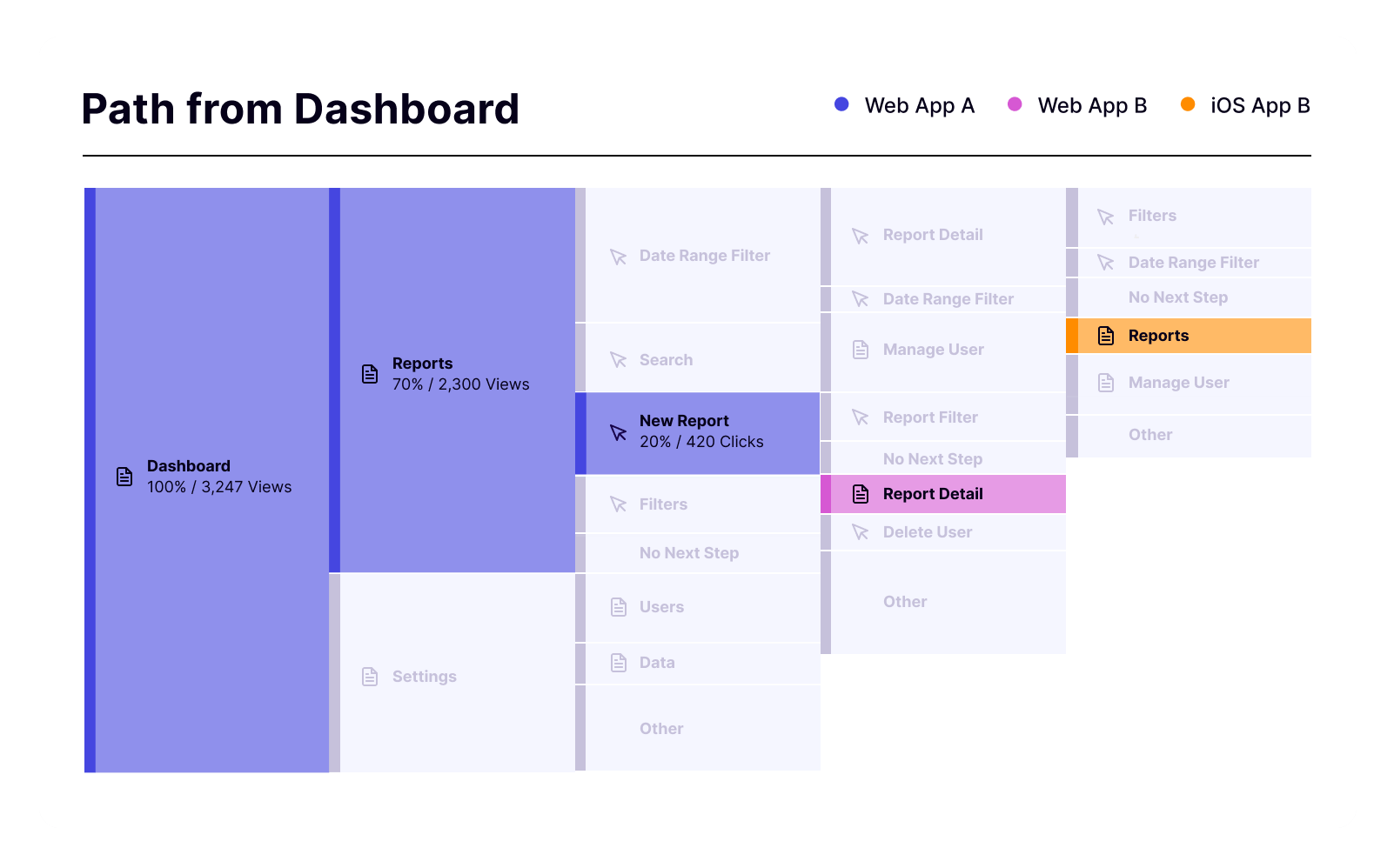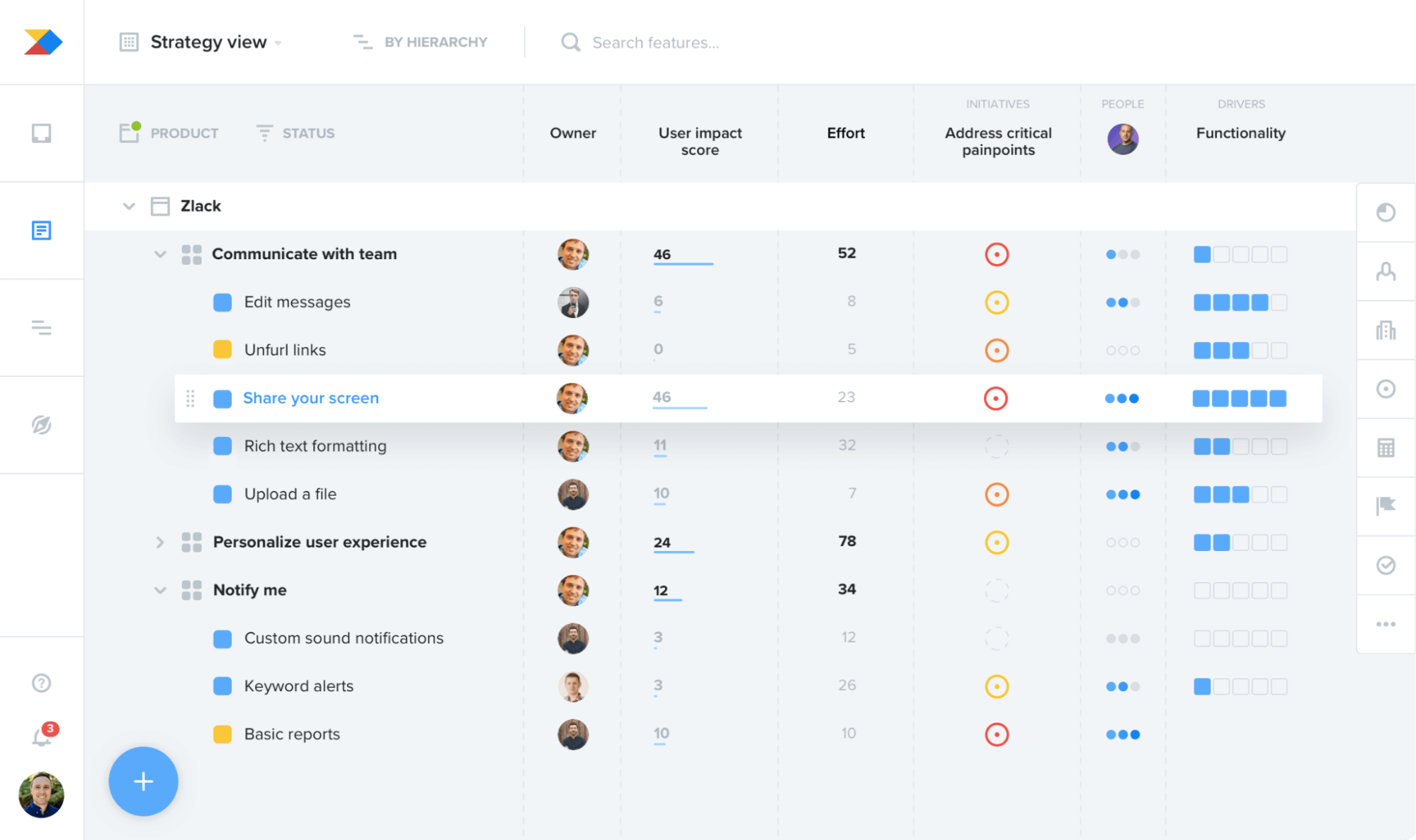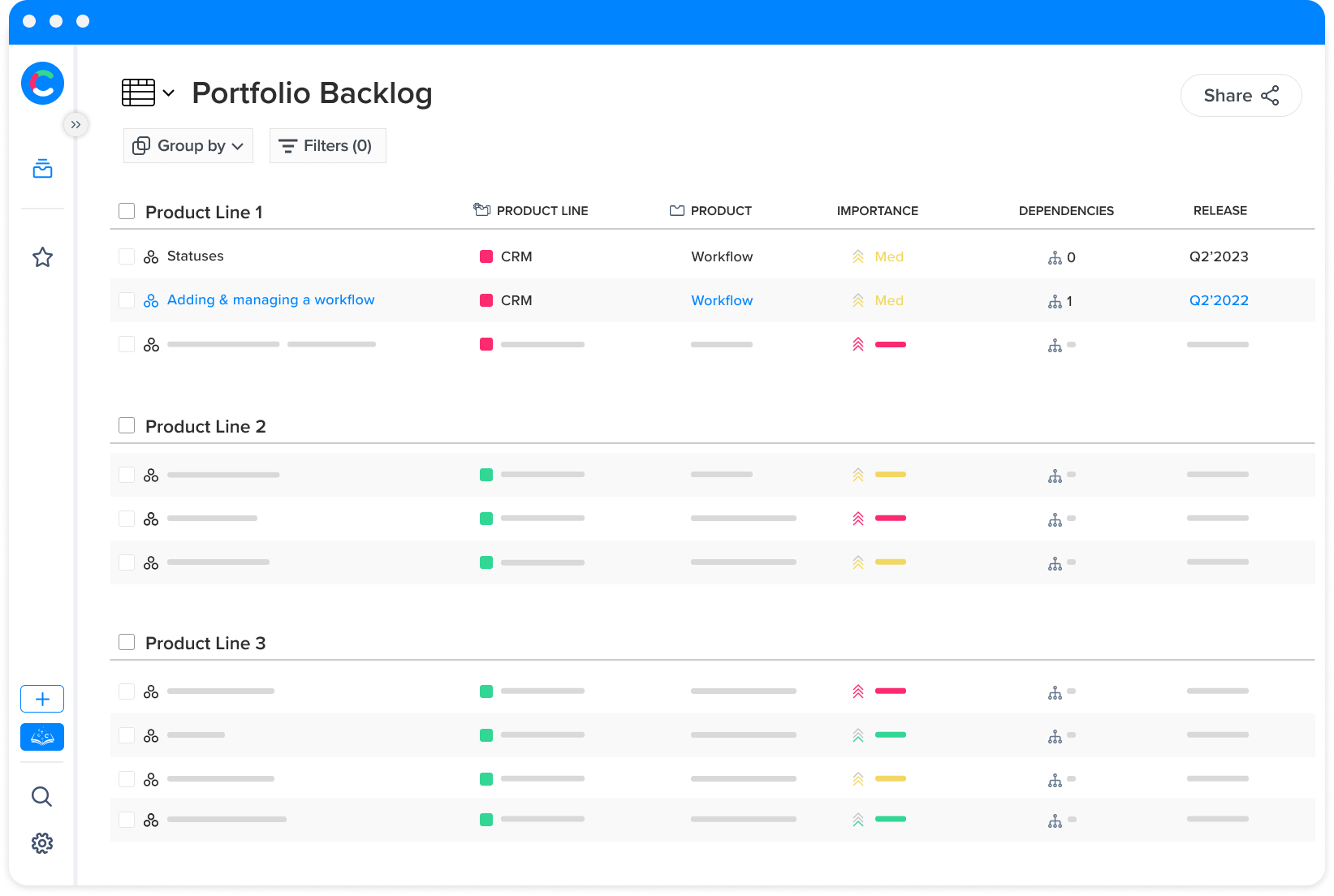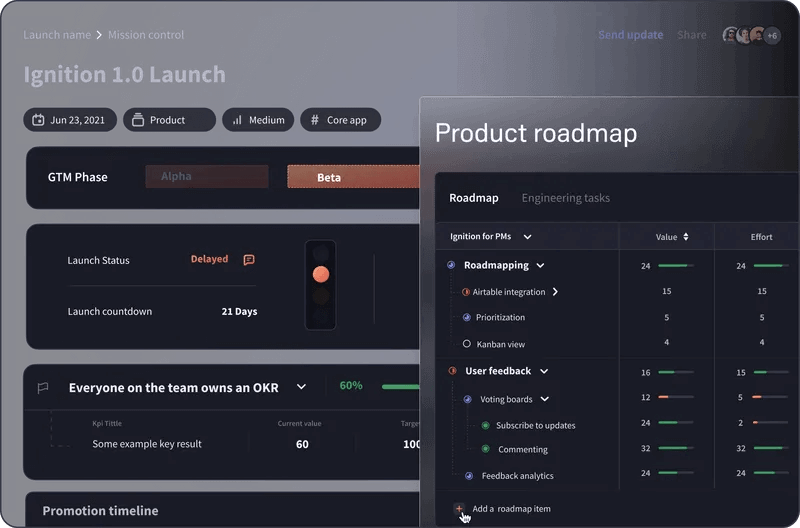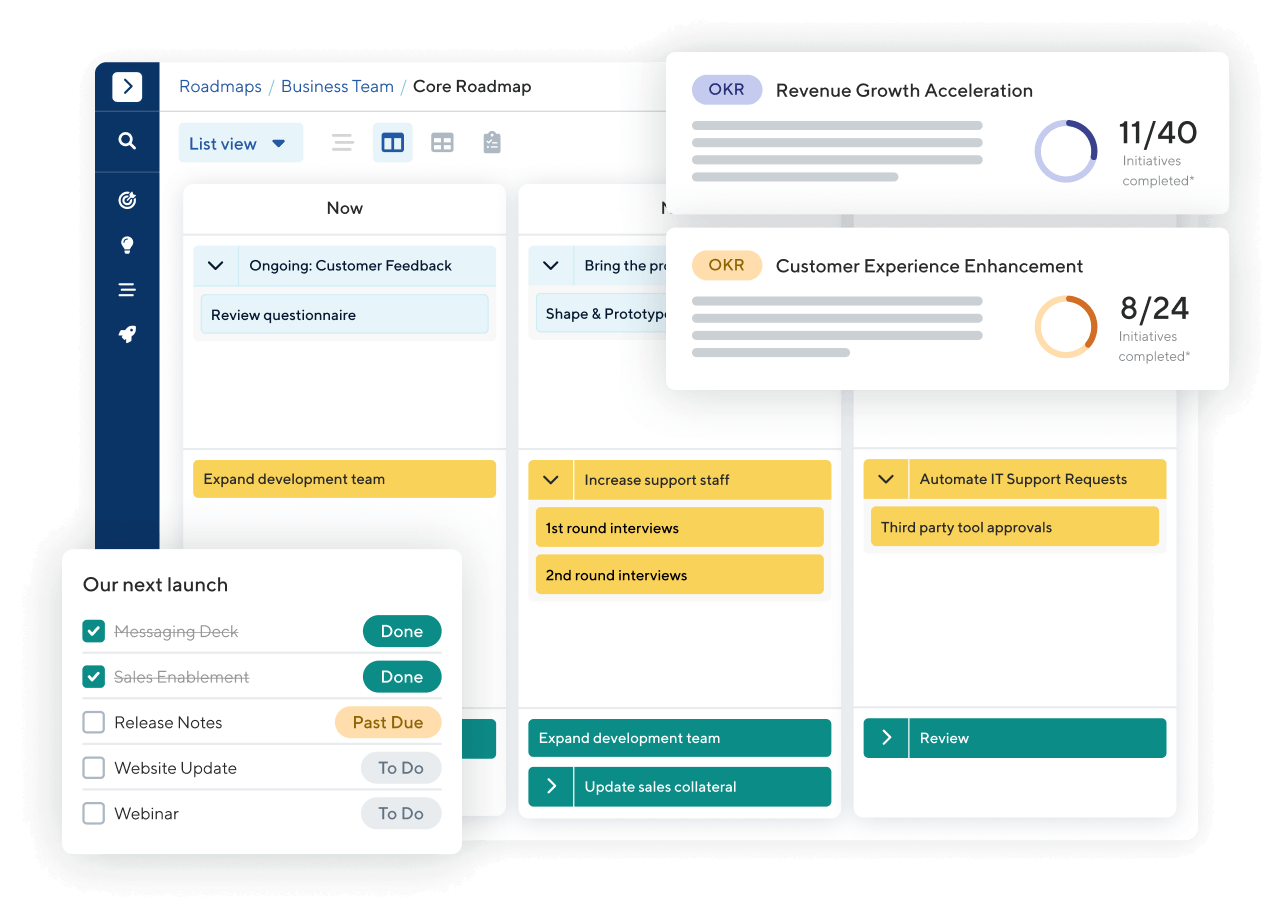For product teams, using product management software is a no-brainer. It helps you track your product development, it records your ideas, and it allows you to allocate resources as effectively as possible.
But with so many digital products to choose from, knowing which one is right for your product team can be tricky. You can spend hours searching for software, trialing different options, only to find that none of the options quite fit the bill.
In this article, we’ll walk you through our tips and advice on how to choose the best product management software for your business. Plus, we’ve listed six of the best product management tools for 2024 to give you a solid starting point.
What is product management software?
Product management involves planning, developing, improving, and launching new products or services. It helps you manage different areas of the product life cycle, from ideation and market research to development, testing, and product release.
Product management software allows you to manage all these key areas in a single platform. With the right software, product managers can streamline their workflow, improve collaboration, and encourage decision-making among cross-functional teams.
Every product management software is different. However, there are some features that crop up in most platforms, including:
- Product roadmapping
- Product backlog management
- Product feature management
- Project tracking
- Requirements management
- Release planning
- Analytics and insights
- Integrations
Product management software also helps teams improve their communication, giving them a central platform to stay in touch and access real-time updates. With 25% of growing product teams struggling with communication silos, using product management software is definitely something to keep in mind to keep communication flowing.
Why is product management important?
Let’s walk through the reasons product management is important for businesses and customers alike.
- Align with customer needs. Effectively managing your product development gives you valuable insights about what your customers want. You can see which products or services are popular, collate customer feedback, and identify areas of improvement. As a result, you can prioritize different areas of product development to deliver customers with the features they want in the least amount of time. The customer experience (and your business) improve — a win-win.
- Make informed product decisions. When you centralize your product planning and management into a single platform, you get a clear picture of how products are performing. You can see your top sellers and unpopular items and identify gaps in your product offering. With this information, you can make informed decisions about product development, including where to invest your time, money, and resources.
- Streamline cross-functional collaboration. Product development requires different teams to work together. Designers, marketers, salespeople — the list goes on. With product management software in place, teams can easily keep in touch. And if you use an online platform that offers real-time access (like Motion), everyone can instantly see the progress of work from other departments.
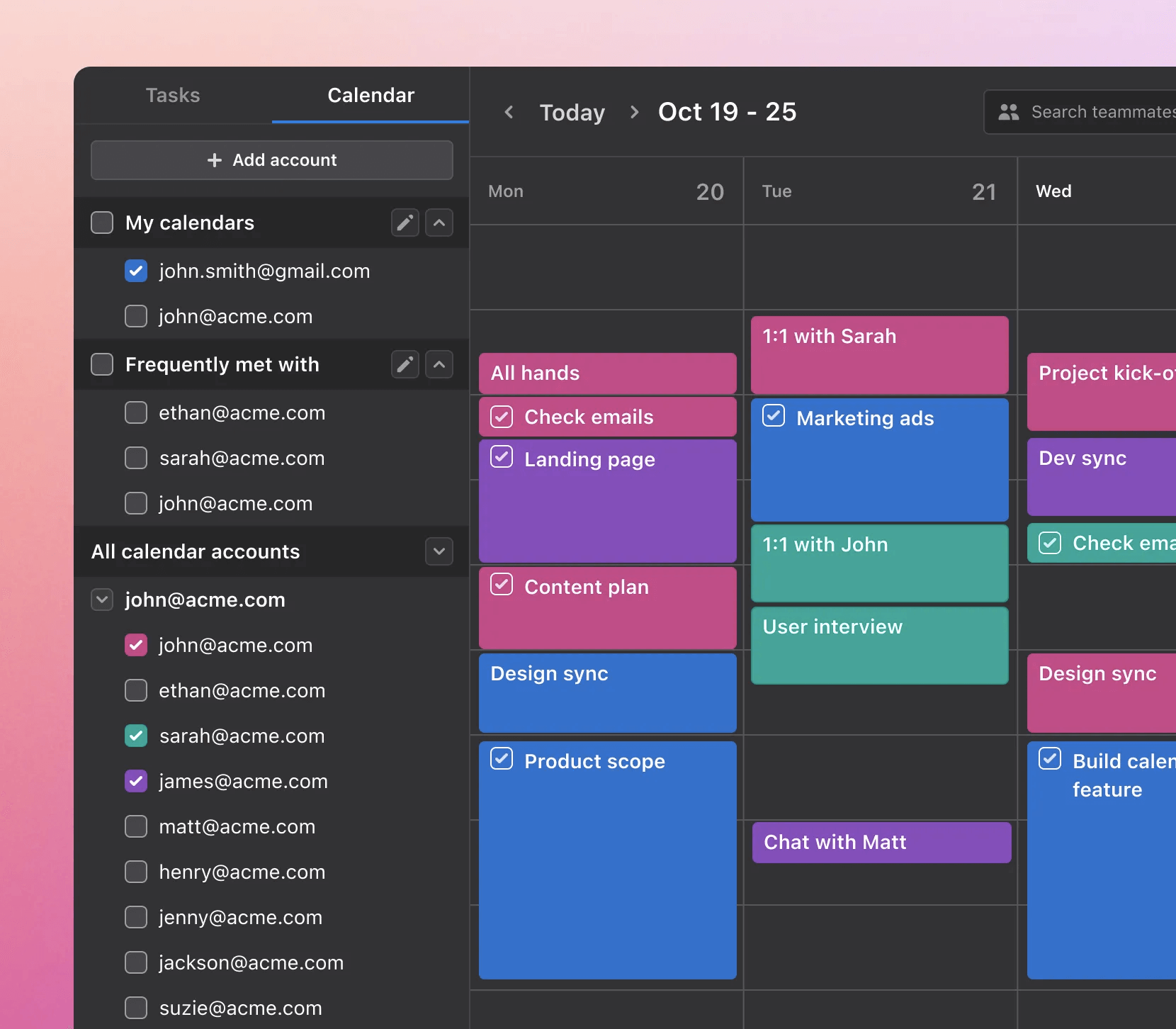 |
- Allocate resources effectively. A product management system lets you see exactly what resources you need for different parts of the product life cycle. This means you can allocate your resources as efficiently as possible, reducing waste and boosting productivity.
There are benefits to effective product management. Yet, at least 75% of product managers say their organization’s product management functions are subpar or non-existent.
This is where product management software can help.
With product management software, you can create a single source of truth, making it easier for teams to follow product management processes and procedures. Everything's in one location, so there's clarity about what needs to happen and when.
How to choose the right product management tools for your business
To help you find the right product management platform for your business, we’ve outlined some things to consider during your search.
- Identify the features and functionalities you need. Start by figuring out what you need from the platform. Do you want it to automate parts of the product management process? Would you like team members to tag each other in comments? Do you want to generate reports? Keep this in mind when looking for a platform to make sure you find one that has all the features you need.
- Confirm your budget. Have a clear price point in mind before you start searching for a platform. That way, you can narrow down your search to find product management software that fits your budget.
- Review customizations. To create the perfect product management process, it helps to use a scalable, flexible, and customizable platform. With customizable software, you can craft a product development process that suits the needs of your business. As a result, you can improve efficiency, productivity, and deliver the best possible products for your customers.
- Take a look at the integrations. If you’re already using different platforms to manage parts of your product management process, you may want to integrate these systems with your new product management software. That way, you can streamline your workflow and keep everything in a central location.
- Consider ease of use. Everyone needs to be able to use the product management software to make the most out of it. This means finding an intuitive and easy-to-use platform (and teams can jump straight in).
6 of the best product management software on the market in 2024
Now that we know what product management software is and how it works, take a look at six of the best platforms on the market in 2024.
1. Motion
Motion is a work management tool that helps teams track, manage, plan, and automate their work schedules. With our platform, product teams can plan their work, prioritize tasks, and track work progress in real time — all with a simple and intuitive interface.
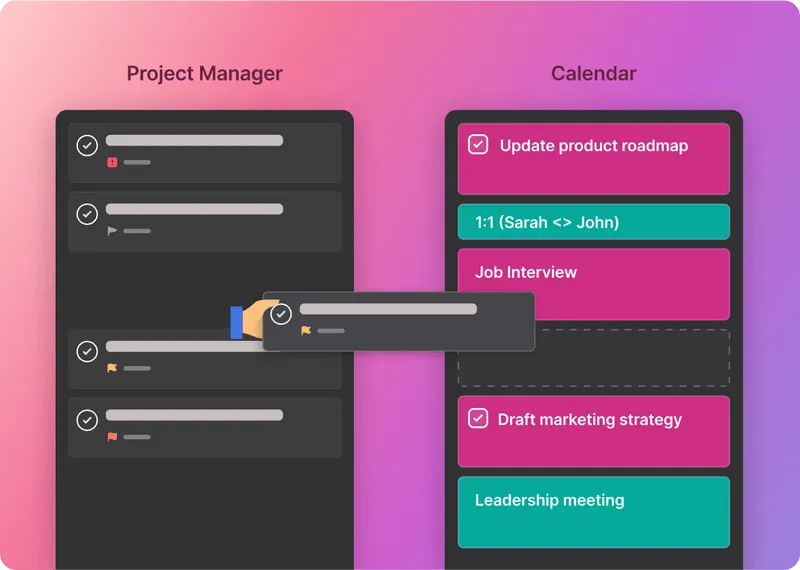 |
Here’s how it works:
- Set up your account. You can start with a free trial to get the ball rolling.
- Connect your existing calendars. You can integrate third-party calendars into Motion, such as Google Calendar and Outlook.
- Choose your default work schedule. We’ll use the framework you choose to schedule your tasks for you (you’re welcome!)
- Add tasks to your calendar. Put all your tasks into the calendar, adding deadlines, durations, and priorities into your schedule. Then, our AI-powered calendar will sort the rest.
When your new work calendar is live, we’ll take care of keeping you on track.
We’ll notify you when new tasks are about to start and let you know if tasks are likely to be overdue. And if you miss a task, don’t worry — we’ll automatically reschedule it for you based on your capacity, deadlines, and priorities.
Motion also helps product teams collaborate.
You can share updates with team members, view each other’s schedules, and work from a central location. You can also add notes, comments, and attachments to all your tasks and projects, giving you a direct line of communication with your entire product development team.
2. Pendo
Pendo is a product analytics app. It has two main areas of functionality:
- It helps you understand how users interact with your product.
- It allows you to improve the user experience with interactive in-app messaging.
What makes Pendo unique is that both of these functions can be implemented with little-to-no coding.
Ultimately, Pendo helps companies improve their software to deliver a better user experience to their customers.
For example, if your mobile app is slow to load pages, Pendo can help you spot the error and put things right. As a result, you can create a smoother and more enjoyable experience for your customers.
3. Productboard
Productboard is a product management system. It helps product teams prioritize product features, understand user needs, and centralize their ideas. As a result, the entire product management process can be more efficient.
For instance, if you’re trying to manage the launch of a new product, you can use ProductBoard to store all the relevant information. Set project objectives, consolidate customer feedback, and track progress in real time.
But the feature that really helps product teams is the platform’s product roadmapping.
There are a variety of roadmapping templates to choose from, making it quick and straightforward for teams to plot their roadmaps. As plans evolve, you can update your roadmap and keep it up-to-date in a matter of clicks.
4. Craft.io
Craft.io is an end-to-end product management platform that tracks the entire product lifecycle. It allows product managers to plan their product development, develop a product strategy, and monitor progress.
One of the unique features of Craft.io is its Guru layer. This feature provides product managers with tips and best practices throughout the product life cycle.
For example, you can choose from a selection of ‘Guru views’ to view your product development. These views are a carefully curated selection of charts, tables, and boards, all of which make it easier to analyze data and make informed product decisions.
The platform also has customizable roadmap templates that can be easily shared with relevant stakeholders. As a result, it can help product teams get buy-in and manage stakeholder expectations.
5. Ignition
Ignition is a go-to-market operations platform. It helps cross-functional teams to manage product launches from start to finish, keeping everyone on the same page and heading in the right direction.
One of the most useful features of Ignition is its automation. From the initial stages of product research to measuring the success of a new product launch, Ignition can automate key parts of the product management process.
Its integrations also allow you to streamline product launches with other go-to-market platforms. This means you can incorporate other platforms into Ignition to manage the entire product management process in one location.
6. ProductPlan
ProductPlan is a product roadmap tool. It’s a simple-to-use platform that allows you to create product roadmaps, share product information with key stakeholders, and prioritize new products.
ProductPlan’s customization is one of its top features. You can create custom views, rank products for consideration, and build unique reports to analyze data.
The platform also allows you to add top-level descriptions of different products in your pipeline, allowing you to see key product information at a single glance.
It also provides other product team members and stakeholders with an overview of each product. As a result, it’s easy for them to know what each product involves, why it’s important to business success, and how to prioritize it.
Use Motion to manage your product development
There are a lot of key features to look out for in product management software in 2024. You want something easy to use, collaborative, and that provides instant access to real-time information — and these are just to name a few.
Finding the right product management software can be tricky when you have to consider all these features and sift through the endless pool of possible platforms. Hopefully, this article has given you a good idea of the type of platform you need and the options that are out there for you to choose from.
If you’re thinking about planning and managing your product management schedule, don’t forget to look at Motion. Assign tasks to team members, automate your work schedule, and keep on top of progress in real-time.
Sign up for a free trial to get started.


